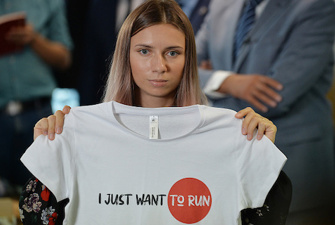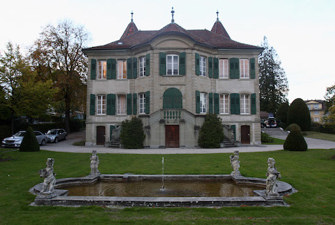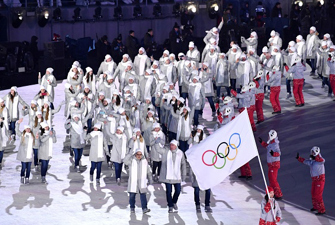The rules of the game: Three pillars for a reform of the Court of Arbitration for Sport: Independence, Transparency and Access to Justice
Global sport is at a turning point and if CAS wants to ensure its legitimating function it must reform to match the level of independence, transparency and accessibility of this new scheme of things, says Antoine Duval in this comment piece and lays forward a roadmap for reform.
Recent cases have highlighted that the Court of Arbitration for Sport (CAS) is in need of a reform. The last notable change of the structure and functioning of the CAS dates back to 1994. Since then, the function of the CAS and its practical significance has radically changed (the growth of CAS’s caseload has been exponential). Nowadays, CAS deals with the most high-profile disputes that arise in global sport: think, for instance, of the Pistorius case, the recent Dutee Chand decision or the pending appeal of UEFA’s president Platini against a FIFA ban.
The latest Pechstein ruling (see our initial commentary of the decision here and a longer version here), puts the finger on CAS’s weak spot. If the CAS is to avoid legal challenges targeting (and potentially destroying) CAS arbitration, it should urgently initiate an inclusive and participative reform process. It ought to bring to the table not only the Sports Governing Bodies (SGBs), but also representatives of athletes and public authorities.
This article aims at providing a preliminary roadmap to start thinking about how to reform the CAS. It will highlight the key issues that need to be discussed and make 10 preliminary (and necessarily incomplete) proposals. Three pillars for a reform of CAS are identified: independence, transparency and access to justice.
I. Ensuring the independence of the CAS
The Pechstein ruling focuses mainly on the question of the independence of the CAS (and chiefly of the International Council of Arbitration for Sport (ICAS)). The key issues to be tackled in this regard arise from the composition of the ICAS, the identity and role of the President of the CAS Appeals Division and the closed list of CAS arbitrators.
a. Ensuring the independence of ICAS
The ICAS is the body in charge of taking the most significant institutional decisions in the life of the CAS. It decides, in particular, who gets to be a CAS arbitrator[1], who gets to be the president of the CAS appeal division[2], and who gets to be the secretary general of the CAS[3]. It also rules on challenges to the independence of arbitrators[4].
This powerful body, sitting quietly at the top of the CAS, is all but independent. Three fifths of its current members are selected by the SGBs, and that group, in turn, selects the remaining two fifths of the members[5]. Thus, a majority of ICAS members have had (or still have) a career inside national and international SGBs, and several among them have acted as legal advisors to the SGBs[6]. The President of the ICAS himself, John Coates, is the Vice-president of the IOC. How can such a homogenous group of people be deemed independent from the collective interest and views of the members of the Olympic movement? Simply put, it can’t and it isn’t.
How should then the ICAS members be selected? A slight change to the selection procedure of ICAS members would be a giant step in the right direction. By empowering athlete representatives to appoint half of the first 8 members of ICAS, the CAS would automatically ensure the independence and impartiality of the additional 12 (neutral) ICAS members picked by them, and who would still have the upper hand on the two partisan fractions inside ICAS. This should be complemented with stringent individual requirements of independence for all ICAS members.
- Proposal 1: Change the selection procedure for ICAS members, with SGBs to select 4 members, athletes’ representatives to select 4 other members, and those 8 members together jointly selecting the remaining 12 members.
- Proposal 2: Impose a strict regime governing conflicts of interest for ICAS members. ICAS members should forego all their mandates within the SGBs and sever all contractual and other ties susceptible of giving rise to a conflict of interest.
b. Ensuring the independence of the President of the Appeals Division
The Appeals Division is at the centre of the work of CAS. It deals with disputes related to doping and transfer cases, but also more generally with those arising from disciplinary sanctions imposed by the SGBs. As provided by article R54 of the CAS Code[7], the president of the Appeals Division decides who is to be the president of a specific appeal panel and, thus, to tilt the balance in one direction or another (the other two members of a panel are respectively selected by the parties). Guess who was occupying this position until 2013? …Thomas Bach, the current IOC President (and back then already a prominent IOC member).
The position of head of the CAS Appeals Division is so crucial, that it cannot be occupied by anybody closely connected to the SGBs. The CAS rules must ensure that the person selected to occupy this position is universally perceived as independent and impartial.
- Proposal 3: Impose a regime of incompatibilities to the President of the Appeals Division. He or she must accept to forego all his or her mandates within the SGBs and sever all contractual ties susceptible of giving rise to a conflict of interest.
c. Ensuring the independence of individual arbitrators
The CAS needs to deal with some of the acute problems that arise regarding the independence of individual CAS arbitrators included on the CAS list. In particular, the phenomenon of so-called repeat arbitrators, i.e. arbitrators who are nominated several times by the same party, poses a real danger. Moreover, a party frequently involved in disputes before the CAS has an edge because it knows which arbitrator is more susceptible to favor its cause.
One way to avoid this bias would be to clearly limit the number of times an arbitrator can be selected by a specific party. Additionally, to put the parties on an equal footing, the CAS would need to publish detailed information on arbitrators’ past nominations (in this regard, see also point II.a. below). Finally, the ICAS should exercise a more stringent control of the independence of individual arbitrators when they are challenged.
- Proposal 4: Limit the number of times an arbitrator can be nominated by a specific party (e.g. 5 times during his or her four-year mandate).
- Proposal 5: CAS to provide detailed information on each arbitrator’s past nominations.
- Proposal 6: ICAS to exercise a more stringent control over the independence and impartiality of CAS arbitrators.
II. Transparency
In the Pechstein case, the German Court did not tackle the question of the lack of transparency of the CAS. Yet, it is also a key requirement to safeguard the legitimacy of the CAS and ensure that it is accountable to the general public.
a. Providing information on arbitrators
First, as discussed above, there is a lack of transparency as far as the arbitrators are concerned. The list of CAS arbitrators on the CAS website gives too little information on the arbitrators’ personal jurisprudential record. Here again, due to the phenomena of repeat-players, information asymmetries are promoted. The parties, mainly SGBs, which have been involved in many CAS arbitration proceedings will typically dispose of an internal database tracking the different positions of CAS arbitrators as they have access to the raw data. The majority of athletes, who are not supported by a strong legal team, will be unable to rely on the same knowledge and will necessarily be in an unfavorable position compared to the SGBs.
This calls for full transparency regarding the profile and record of each CAS arbitrator. Similarly, the CAS lacks mandatory disclosure rules regarding the arbitrators’ biographical details[8]. Each arbitrator should have to disclose, in the information included on the CAS website, their past (for example over the last 5 years) and/or present contractual relationships, or other significant personal or financial ties with SGBs and any other relevant stakeholder in sport.
- Proposal 7: CAS to impose more stringent ex ante disclosure rules imposing that each CAS arbitrator discloses on the CAS website all present and past (previous 5 years) contractual links with SGBs and other sport stakeholders.
b. Systematic publication of CAS awards in appeal cases
What is even more important, also because it would enable the parties and external observers to better check the independence and evaluate the track record of arbitrators, is the systematic publication of CAS awards. The CAS publishes only a very limited sample of all the awards rendered by the Appeals Division. Currently, the general public and the athletes are unable to critically assess and use the many awards that remain unpublished and therefore inaccessible.
A transparent access to all appeal awards is a vital question of procedural justice, and a crucial development in order to subject the CAS and its judicial work to the critical scrutiny of the global public sphere.
- Proposal 8: CAS to systematically publish on its website all the CAS awards rendered following the appeal procedure.
c. Publication of administrative documents
Nobody knows precisely the financial records of the CAS or the precise content of the discussions happening inside the ICAS. This is not compatible with the very public function played by the CAS in global sports. It it is therefore central that the CAS adopts transparent administrative practices.
- Proposal 9: CAS to systematically publish on its website all the key administrative documents (such as the minutes of ICAS meetings and its annual reports)
III. Access to Justice
Finally, the CAS has a problem with access to justice[9]. CAS proceedings are too expensive for many athletes who are not part of the 1% elite of superstars. In recent years, the CAS has started to tackle the issue by introducing two mechanisms: a pro-bono list of CAS lawyers and a procedure granting legal aid to athletes in financial hardship.
These steps certainly go in the right direction, but they are still too limited. Athletes can be forced to waive their access to the national courts (and state legal aid), only if the CAS provides sufficient financial means for them to dispose of a fair chance to present their case. This requires that the SGBs which provide for CAS arbitration in their regulations accept to take on a larger share of the costs of CAS proceedings, for instance by paying a levy corresponding to a specific share of their revenues.
- Proposal 10: CAS to fund, through a levy on the SGBs, a more comprehensive legal aid scheme for appellants to the CAS that lack sufficient financial resources.
Conclusion
Global sport is at a turning point, this time is different, it is truly about reform or revolution. As FIFA and IAAF sink more and more into chaos, it becomes clear that one of the sporting challenges of the 21st century will be to democratize and check the massive transnational organizations fuelled by TV and sponsoring money that govern global sport.
To this end, the CAS has a key role to play. It could become a sort of global administrative and constitutional court for sport, reviewing the legislative and administrative decisions of the SGBs. However, this will be realistic only if CAS itself is reformed to match the level of independence, transparency and accessibility needed to ensure its legitimating function. Let’s not just wait, comme si de rien n’était, for the revolution to come.
Now is the time for all interested parties (CAS, SGBs, athletes, public authorities) to come together and shape a comprehensive reform of the CAS that must be guided by the will to ensure a stronger independence, greater transparency and broader access to justice.
A longer version of this piece is available on the ASSER International Sports Law Blog.
References:
[1] Article S6 para 3 CAS Code (Statutes of ICAS and CAS).
[2] Article S6 para 2 CAS Code.
[3] Article S6 para 6 CAS Code.
[4] Article S6 para 4 CAS Code.
[5] See Article S4 CAS Code : ICAS is composed of twenty members, experienced jurists appointed in the following manner :
- four members are appointed by the International Federations (IFs), viz. three by the Association of Summer Olympic IFs (ASOIF) and one by the Association of the Winter Olympic IFs (AIOWF), chosen from within or outside their membership;
- four members are appointed by the Association of the National Olympic Committees (ANOC), chosen from within or outside its membership;
- four members are appointed by the International Olympic Committee (IOC), chosen from within or outside its membership;
- four members are appointed by the twelve members of ICAS listed above, after appropriate consultation with a view to safeguarding the interests of the athletes;
- four members are appointed by the sixteen members of ICAS listed above, chosen from among personalities independent of the bodies designating the other members of the ICAS.
[6] In the current ICAS, 13 (out of 20) members have (or had) direct ties to SGBs if you trust their official bios: Abdullah Al Hayyan, Tjasa Andrée-Prosenc, Patrick Baumann, Scott Blackmun, Alexandra Brilliantova, John D. Coates, Moya Dodd, Ivo Eusebio,Michael B. Lenard,Göran Petersson, Richard W. Pound, Corinne Schmidhauser, Tricia C.M. Smith. None of the 20 has any ties with athletes’ representative organisations.
[7] Article R54 CAS Code stipulates:
“If three arbitrators are to be appointed, the President of the Division shall appoint the President of the Panel following nomination of the arbitrator by the Respondent and after having consulted the arbitrators.”
[8] Article R33 CAS Code only stipulates that «Every arbitrator shall be and remain impartial and independent of the parties and shall immediately disclose any circumstances which may affect his independence with respect to any of the parties».
[9] But not by all see A. Rigozzi & F. Robert-Tissot, ‘"Consent" in Sports Arbitration: Its Multiple Aspects’, E. Geisinger & E. Trabaldo de Mestral (eds), Sports Arbitration: A Coach for other players?, ASA Special Series No. 41, pp. 59-95, at 73-81.



